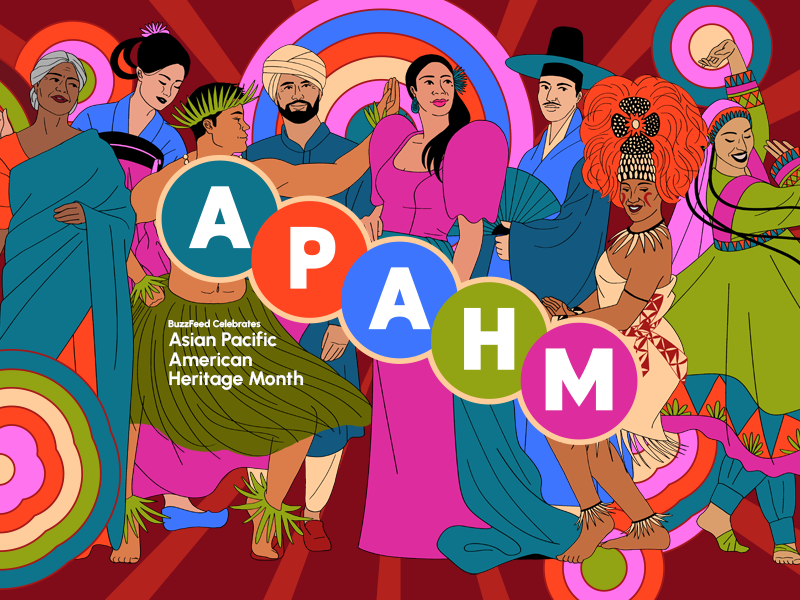Here's How Different The Japanese Elementary School System Is Compared To The US, As Told From Someone Who's Experienced Both
During the summers of 2008 and 2009, I attended a public elementary school in a Tokyo suburb. As an American, it was one of the coolest experiences of my life.
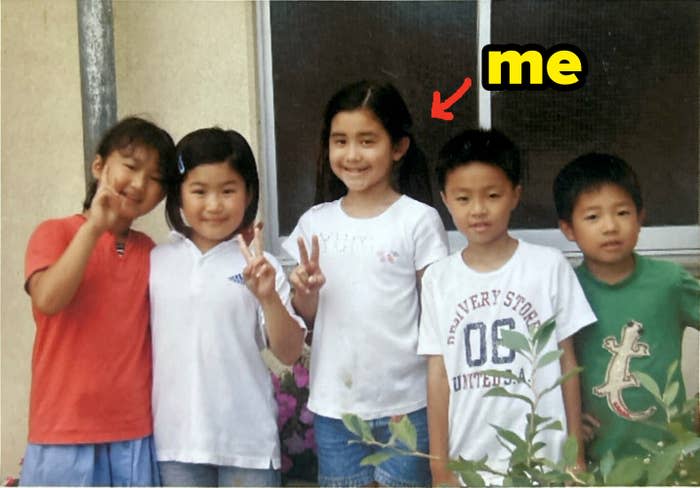
For some context, I grew up in Hawaii, but I'd frequently visit my grandparents in Tokyo during the summers. For whatever reason, when I was in third grade, my mom enrolled me as a student at the local elementary school near my grandma's house. Funny enough, this was actually the same elementary school that she attended as a kid.
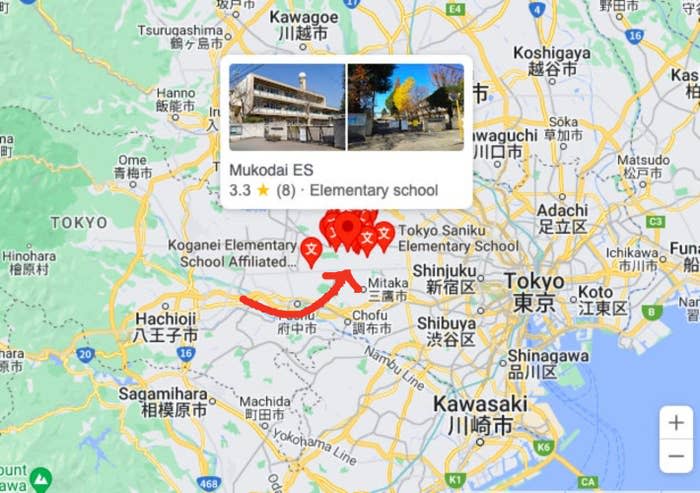
Looking back on it, I'm not exactly sure how this was all allowed. I vaguely remember my mom taking me to the school district office one day and signing a bunch of papers. I also held a Japanese passport and established my grandma's house as a place of residency, so that probably helped.
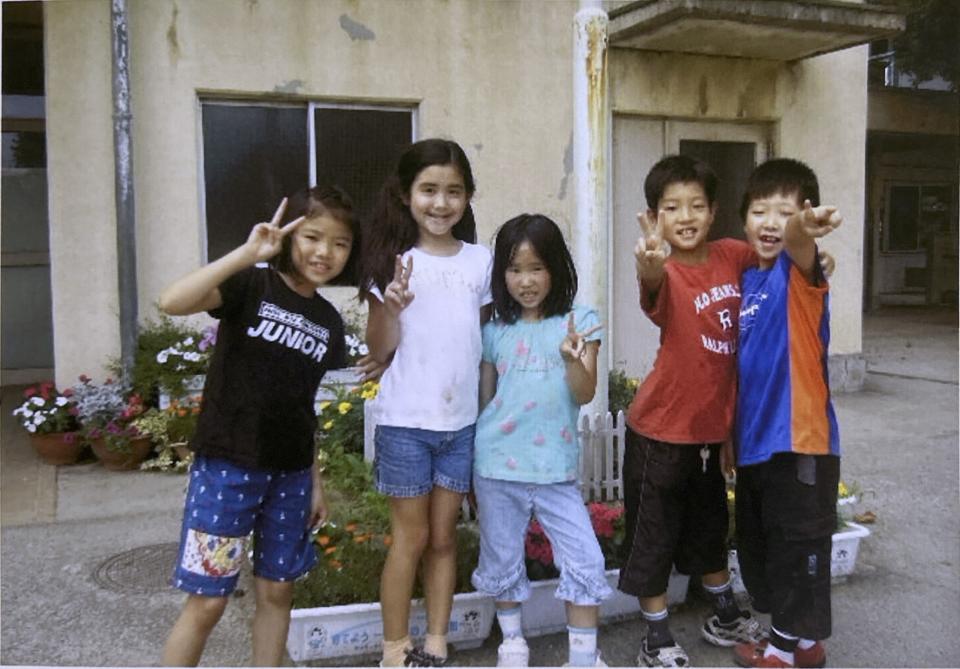
I spoke a little bit of Japanese with my family so I was able to talk to my classmates and understand most things, but I definitely remember feeling out of place at times.
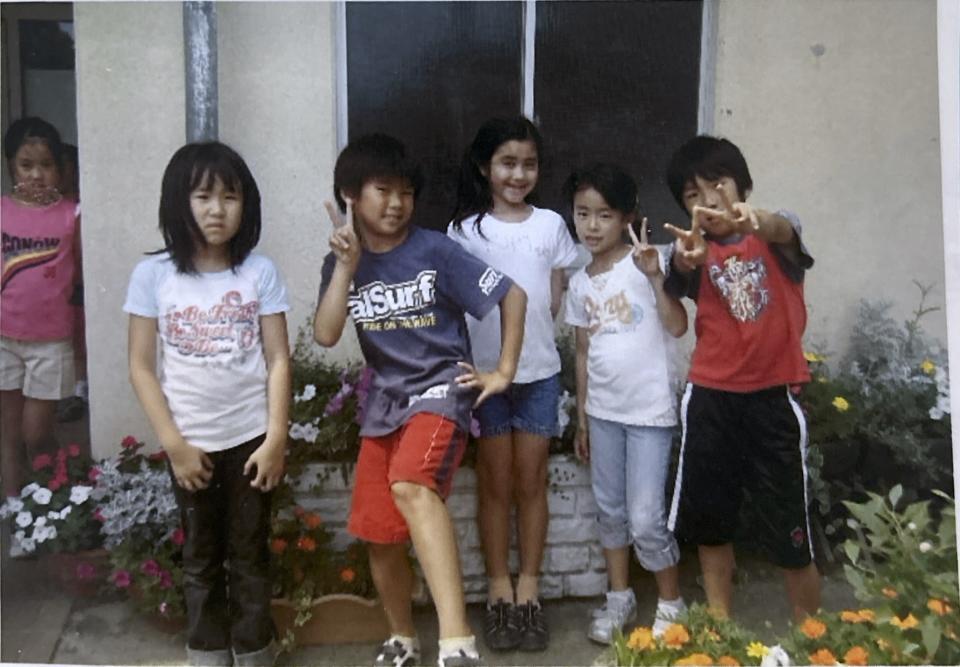
But somehow, with my intermediate-level Japanese comprehension and my mighty 4-foot-something-stature, I managed to survive, and I even had a lot of fun. School life in Japan is a completely different world compared to the US, and it's all so interesting to reflect on. Here are 15 of the major differences I noticed:
1.The school year started in April and ended in March.
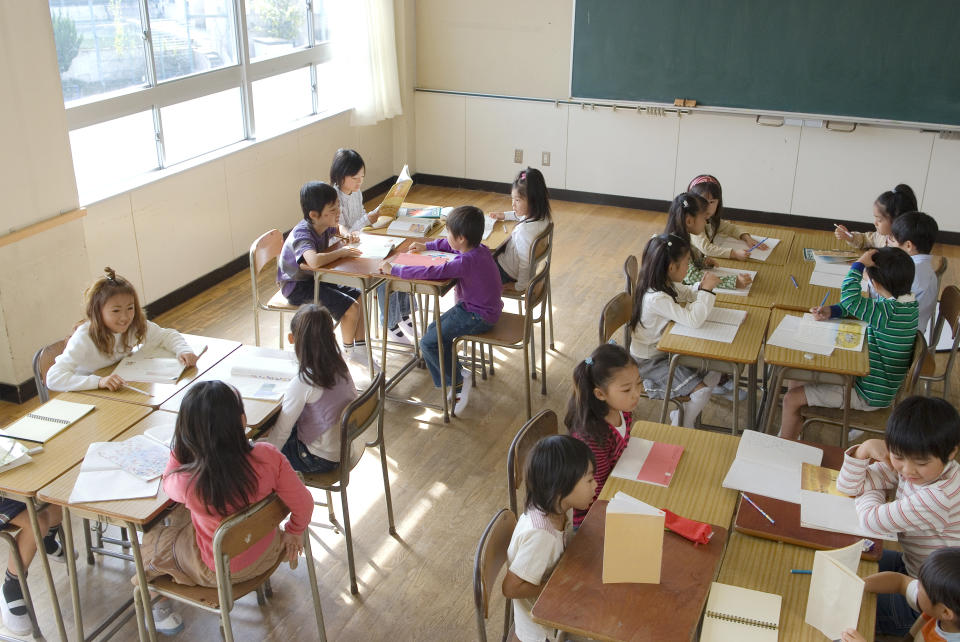
During the course of my entire academic life, I've started the school year in August and ended in May. Whether it was elementary, middle, high school, or even college — school always started in the later part of summer and wrapped up a little after spring. This also meant a long, two-month summer vacation during June and July, a couple of weeks of Winter Break in late December, as well as a week of Spring Break in late March or early April. Obviously, the exact schedules differ based on which state and school you're at in the US, but I think for the most part, American schools operate on this schedule.
In Japan, school starts in April and ends in March of the following year. There's about a five-week summer vacation in late July, about 10 days of break in late December, and another 10 days in late March.
2.It was pretty common for students to have the same classmates and teacher for two years at a time.
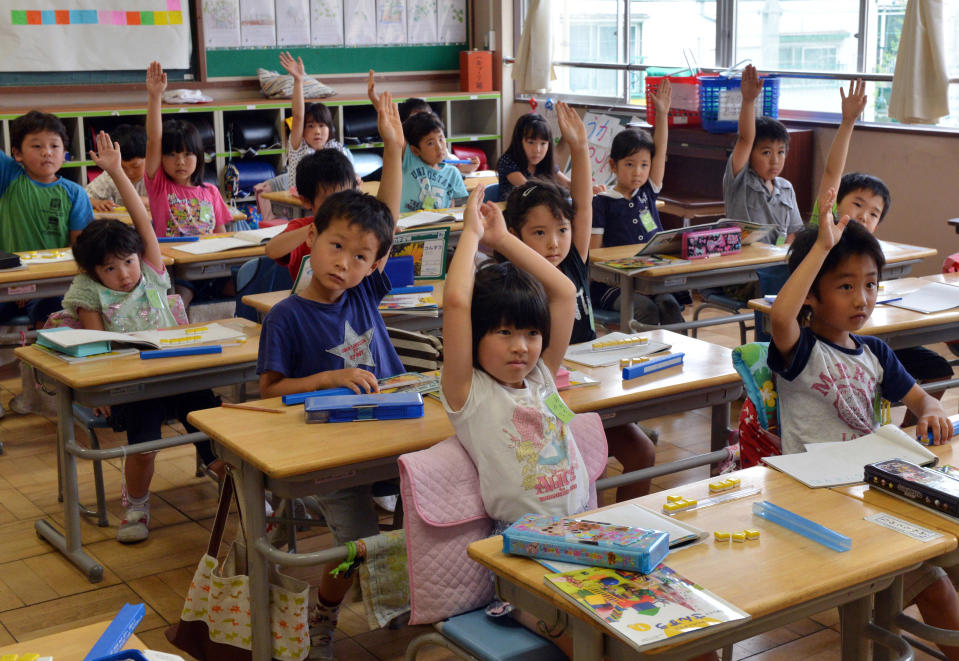
In the States, I was used to having a different teacher every year with different classmates. In Japan, though not at every school, it's pretty common for students to have the same teacher for first and second grade, third and fourth grade, and fifth and sixth grade. So for both of the summers I went to school in Japan, I had the same classmates and teacher. It was kind of nice that way though because by the second year, it felt like everyone knew each other pretty well and that there was a sense of community within the classroom.
3.Everyone was required to wear the same backpacks.
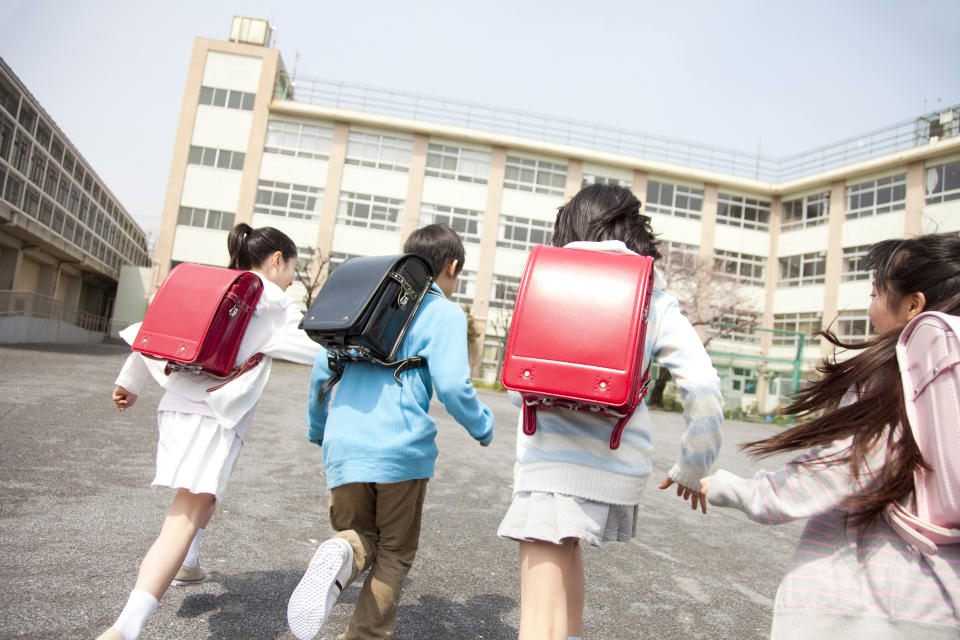
In Japan, most elementary school students use a leather backpack (shown in the photo above) called a "Randoseru." The term comes from the Dutch word "Ransel," which means backpack. They're sold at pretty much every department store, available in navy or black for boys, and red or pink for girls. They're also pretty expensive, averaging around 60,000 yen or $450, but its usually customary that the grandparents or parents buy these for their kids, and they would use the same one from first through sixth grade.
The Randoseru was founded at one school in the late 1800s in hopes of creating a sense of equality between its students. It was later popularized after Emperor Taicho, who was about to start school at the time, was gifted a Randoseru by Prince Yoshihito.
The most interesting part of all of this is that there's actually no law on the federal or city level that requires the use of a Randoseru. I guess people just keep using them because its what everybody else does.
4.Everyone walked to and from school without their parents.

Everyone, and I mean everyone, walked to and from school without their parents. This was actually very fun, because it meant being able to spend more time with your friends. Occasionally after school, my friends and I would stop at a park to play or go over to each other's houses to eat snacks.
This was totally different from what I was used to in Hawaii, where my mom would drop me off and pick me up from school by car.
5.Students ate lunch in their classrooms and helped serve meals.
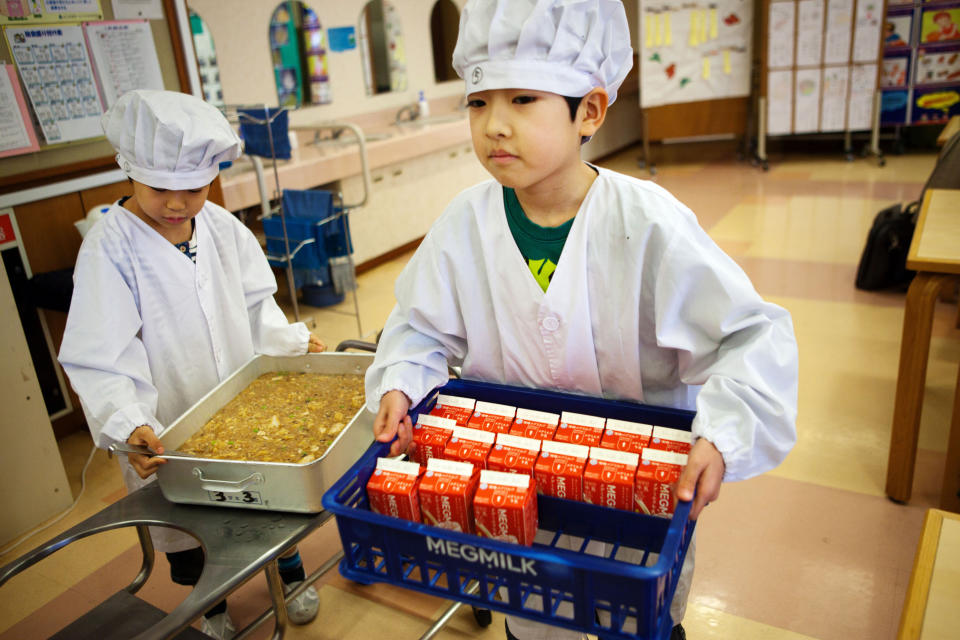
There's no common eating space like a cafeteria at elementary schools in Japan. Instead, every day, a group of students from each class will be assigned "lunch duty" to help serve their classmates for the day. Kids on lunch duty would retrieve big trays of food from the school's cook, bring it to the classroom, and set up a serving station at the front of the class. Everyone who was serving had to wear an apron and a big hat, and at my school, kids had to wait until the last plate was served in order to begin eating. We also would rearrange the desks for lunch time to make sure everyone had someone next to and across from them while enjoying their food. It was so wholesome.
6.The lunch was extremely delicious.
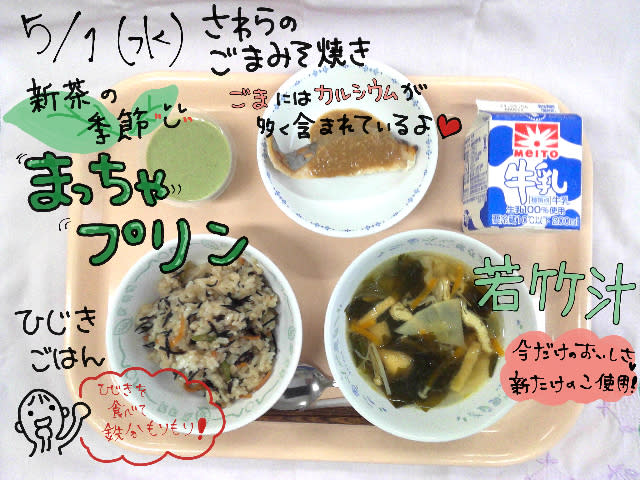
In the US, the school lunch was usually not great. Meals were never very nutritious or balanced, nor did they taste any good. Maybe that was just my experience because I went to an underfunded public elementary school, but I think the general consensus in the US is that school lunch, sadly, is not something people look forward to eating.
In Japan, that was not the case at all. My mind was blown because every day, the school lunch was incredible. Food was served on actual plates, instead of on paper trays. I actually managed to find the photo above, as well as the following photo, on the website of the school I went to, so the meal shown above is a real lunch that was served.
In the picture above, there's a piece of fish with sesame sauce, rice with Hijiki, seaweed soup, matcha pudding, and a carton of milk. What's more, the food tasted good, every single day. Even some things that didn't "sound good" on paper managed to impress me.
Here's another example of lunch: salad with miso dressing, toast with tuna, mayo, and corn, vegetable soup, and a carton of milk.
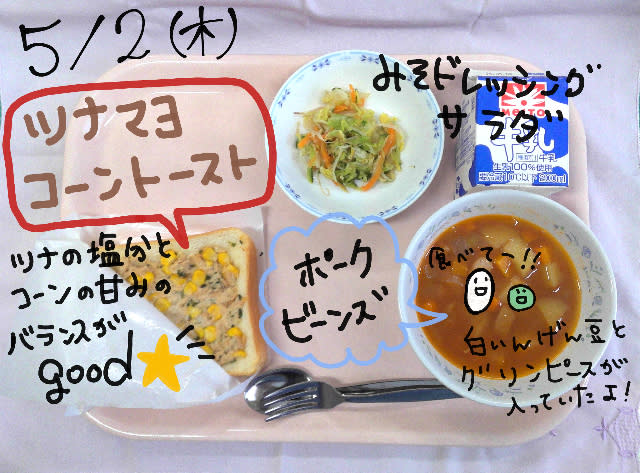
7.Everyone was required to wear gym uniforms during P.E.
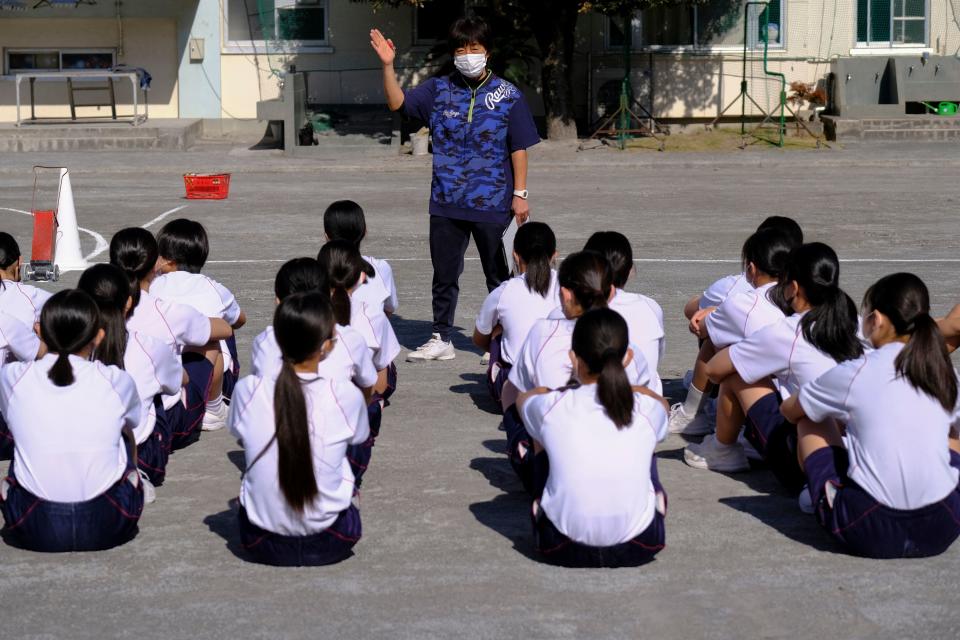
Another thing that was a bit mind-blowing to me was that everyone had to change into uniforms for gym class. The uniforms consisted of a white T-shirt and navy shorts, which seems to be the standard across most schools in Japan.
At my elementary school in Hawaii, they didn't require uniforms for gym class. In retrospect, they definitely should have, because why would anyone want to stay in the same, sweaty clothes all day?
8.There was a pool, and everyone had to have their names sewn onto their uniforms.
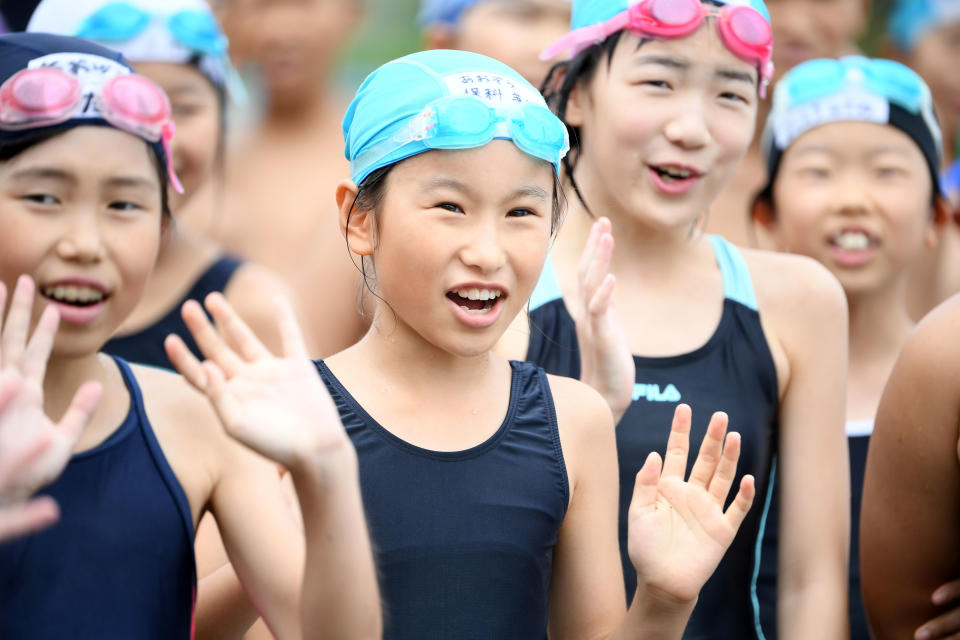
Going off of the gym uniforms theme, there was also a uniform for the pool: a navy one-piece for girls and navy compression swim shorts for boys. Everyone also had to have a swim cap and goggles, as well as their names sewn onto their uniforms. In the photo above, the students have their names sewn onto their swim caps. At my school, however, we had to have our names sewn onto the back of our swimsuits. I'm not sure exactly why they required this, but I would guess that it helps to identify someone in an emergency, since it might be difficult to differentiate people in identical swimsuits.
9.You weren't allowed to bring snacks or toys to school.
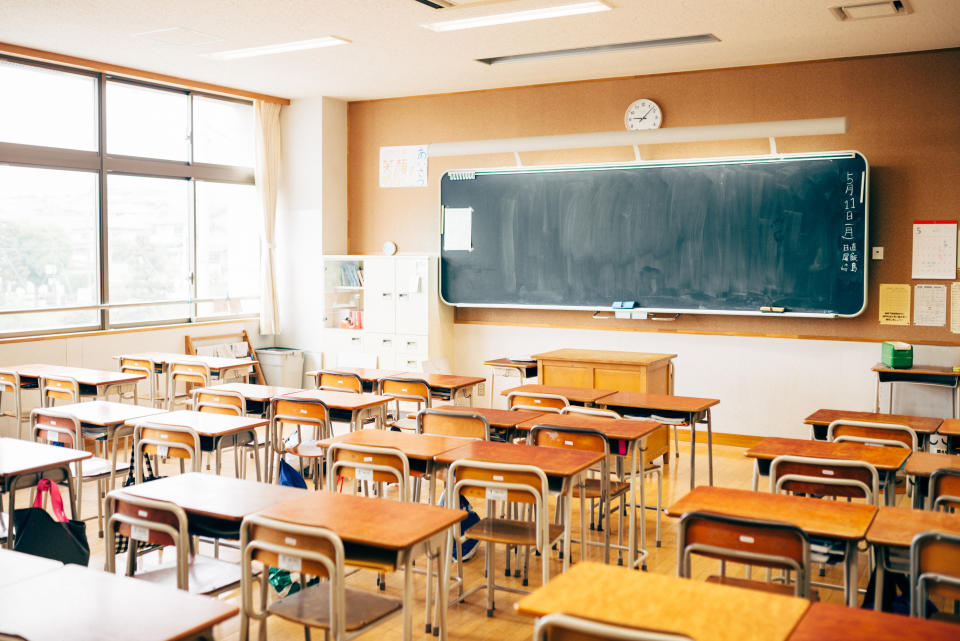
This was one of the most shocking things to me because in Hawaii, I had been so used to bringing snacks to share with my friends at recess. In Japan, bringing snacks, gum, toys, phones, or any other non-school related item to class wasn't allowed. This rule definitely made me look forward to lunch time even more.
10.Sometimes, there was school on Saturdays.
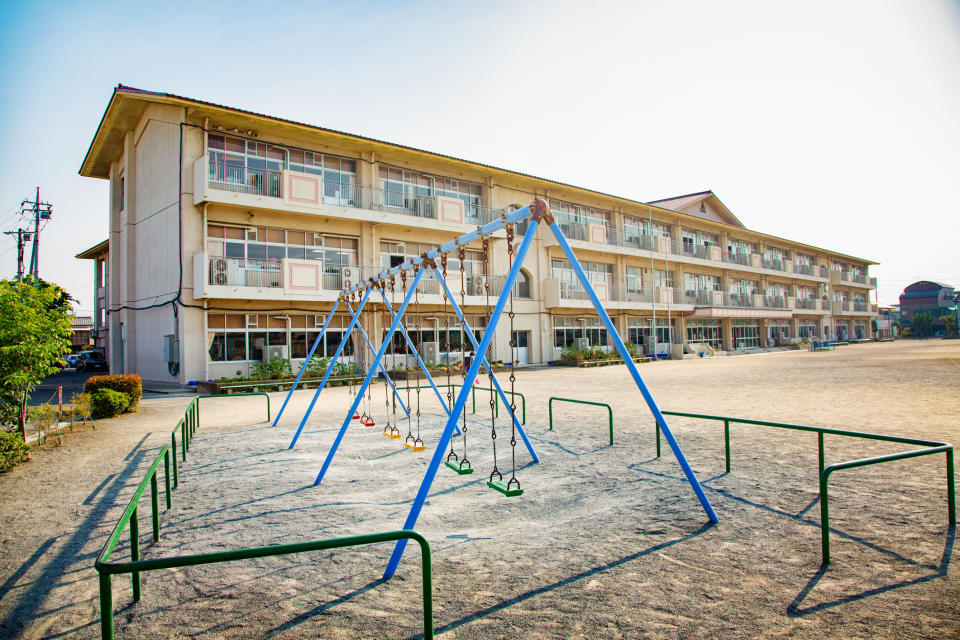
This wasn't a thing all the time and I'm sure it varies from school to school, but I remember once or twice a month, there would be classes on Saturdays, although it would usually be a half-day.
Overall, it's just amazing to think about how much more time Japanese kids spend at school compared to the US.
11.There was a song that played on loud speakers every evening, and it meant it was time to go home.
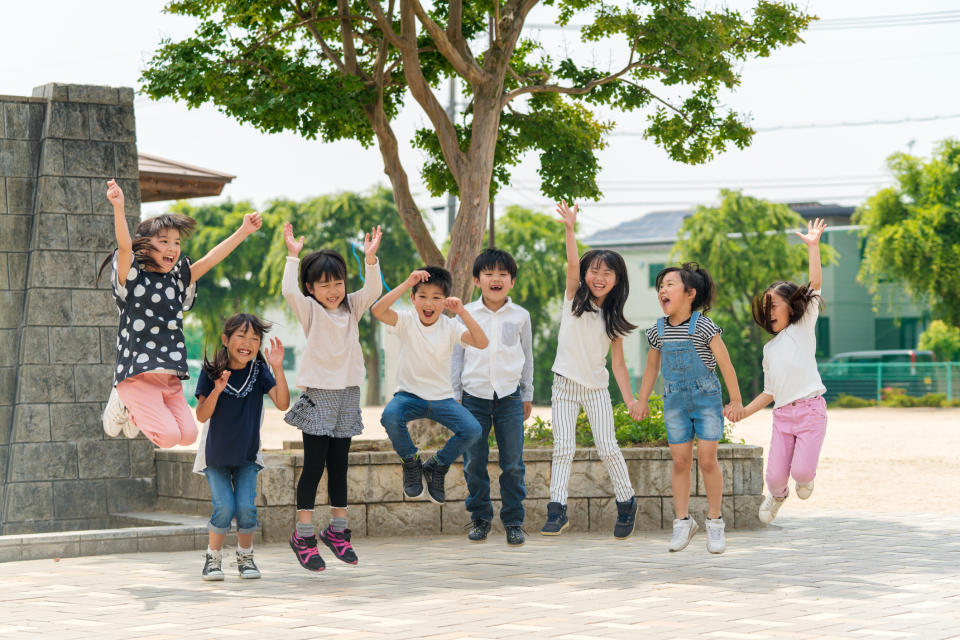
Every day around 5 p.m., the song, "Yuyake Koyake," blasted on loudspeakers near schools and official government buildings for the entire city to hear. It was meant to signal to kids out playing, "Hey, it's time to get home now!"
This video is a recording of the song, and it's exactly how I remember it. The melody lasted about 30 seconds, and the title of the song translates to something like, "After the sunset glow."
12.Students had to clean their classrooms every day.
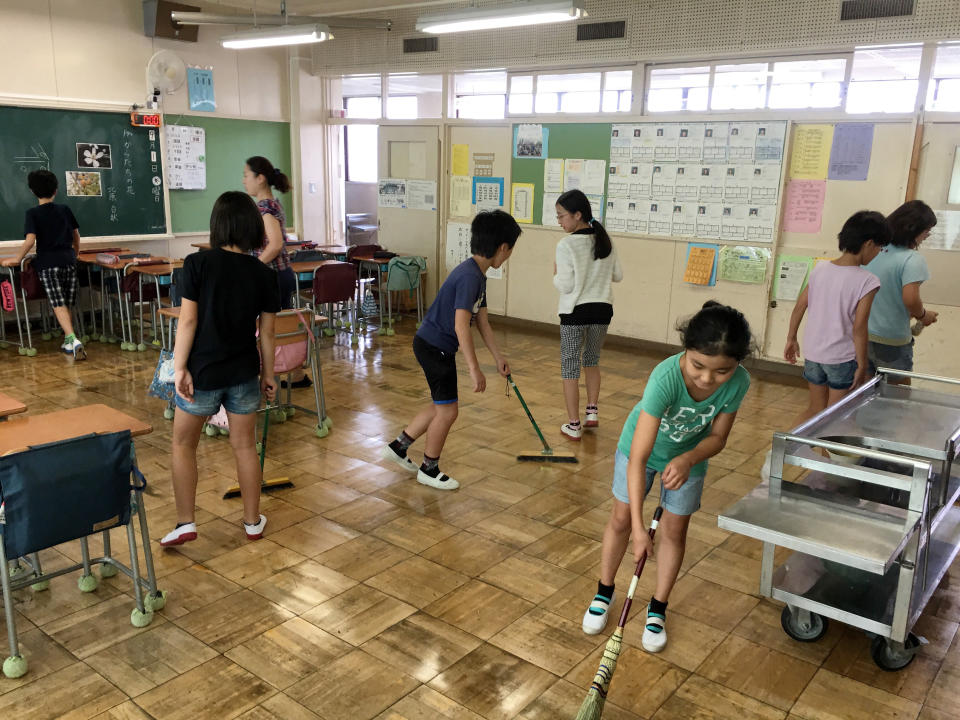
In Japanese schools, students have to clean their classrooms and hallways for about 15 minutes every day. At my school, everyone kind of designated themselves an area to clean during this time. You could help sweep the floor, wipe down tables, or clear the chalkboard of any unnecessary marks.
13.There were big communal sinks everywhere.

At my school, there were these massive sinks in every hallway. Upon further informal research, it seems like I'm not the only one who noticed this detail, and it appears that the Big Sink is a standard part of a Japanese school.
These sinks were probably there to facilitate with cleaning, but they were also where everyone would go to wash their hands in between classes, as well as wash off their paint brushes for calligraphy class. Everyone also brought their own handkerchiefs to dry off their hands from the sinks.
14.There were extracurricular clubs that everyone took part in after school.
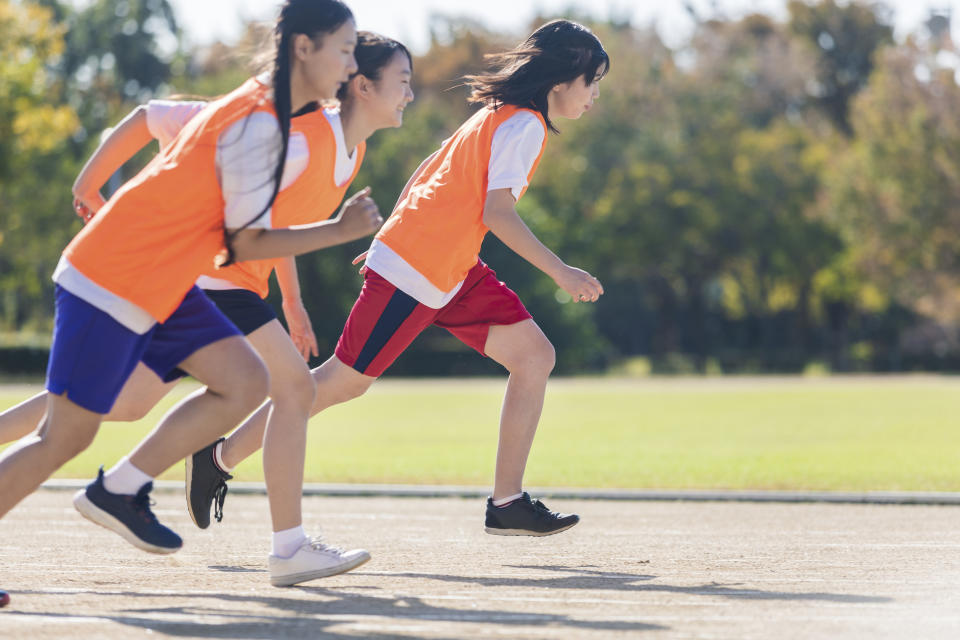
There were dozens of different clubs you could join through the school, and you'd meet up with your club a few times a week after class ended. I remember being part of the baton twirling club — random, I know — and practicing baton with my classmates for about an hour a few times a week. Other clubs included activities like soccer, basketball, baseball, dance, badminton, music, art, and cooking. All of these clubs were supervised by different teachers at the school, and students of every grade could join a club, so it was a great way to meet other kids and make friends.
15.And finally, everyone was required to change into their indoor shoes upon entering the school.
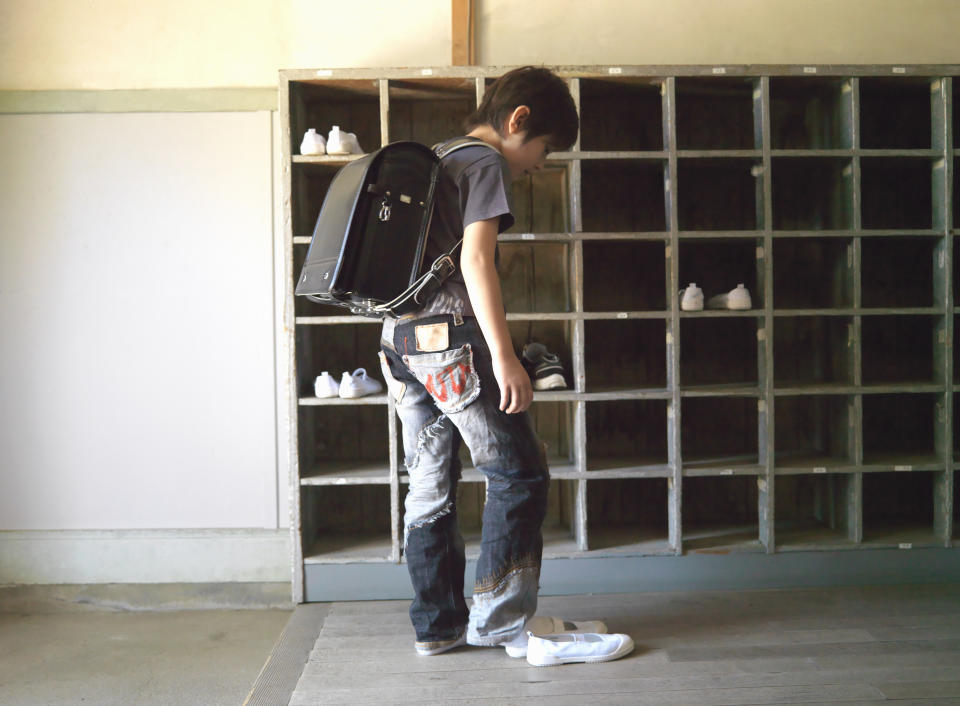
This rules kind of goes hand-in-hand with students cleaning their own classes, but in another effort to keep the space clean, kids had two different pairs of shoes they wore in schools. Right when you enter the school, you'd take off your outdoor shoes, put them into a cubby, and then change into uwabaki, or your indoor shoes. Everyone was required to have their own uwabaki, and they were these bright white, soft-soled shoes seemingly made of canvas tote.
Check out more API-centered content by exploring how BuzzFeed celebrates Asian Pacific American Heritage Month! Of course, the content doesn't end after May. Follow BuzzFeed’s A*Pop on Instagram, TikTok, and YouTube to keep up with our latest API content year-round.
